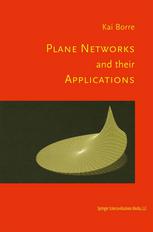

Most ebook files are in PDF format, so you can easily read them using various software such as Foxit Reader or directly on the Google Chrome browser.
Some ebook files are released by publishers in other formats such as .awz, .mobi, .epub, .fb2, etc. You may need to install specific software to read these formats on mobile/PC, such as Calibre.
Please read the tutorial at this link: https://ebookbell.com/faq
We offer FREE conversion to the popular formats you request; however, this may take some time. Therefore, right after payment, please email us, and we will try to provide the service as quickly as possible.
For some exceptional file formats or broken links (if any), please refrain from opening any disputes. Instead, email us first, and we will try to assist within a maximum of 6 hours.
EbookBell Team

4.8
64 reviewsSurely most geodesists have been occupied by seeking optimal shapes of a net work. I'm no exception. This book contains the more fruitful results on the topic. No matter how you choose to understand the adjective "optimal," it is no doubt useful as a beginning to understand error propagation in various types of net works. Basically, geodesists are familar with the actual, discrete network. So this book brings together some elementary means of analyzing networks with a few hundred points. The effectofchanging boundary conditions is especially studied. The variance propagation in the network is derived from covariance matrices. During a symposium in Oxford in 1973 geodesists were asking: Is it possible to create a special theory for geodetic networks? The key is that geodetic networks share a fundamental characteristic: The connections are local. Observations are taken between neighbors. The underlying graph has no edges connecting distant points. And we can obtain stable information about the global problem for the whole network by solving a simpler problem for a local neighborhood within the network. This bookalso deals with networktheory in acontinuousmode. When the num ber of points becomes very large, it is natural to look for a substitute for the dis crete method. The fruitful transition from discreteness to continuum is to let the distance between points tend to zero and at the same time boundcertain functions. A major step is to redefine the weights for all observationsas weightperunitarea.